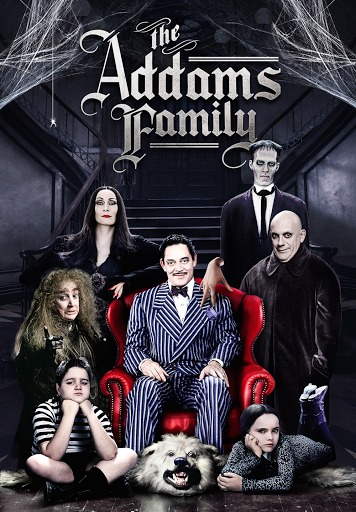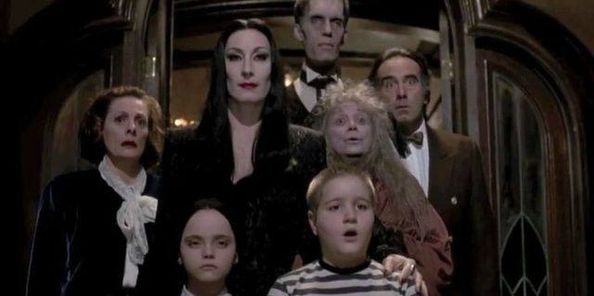“The Addams Family” (1991)

The Addams Family (1991): A Classic Tale of Eccentricity and Embracing Uniqueness
Introduction
Released in 1991, The Addams Family directed by Barry Sonnenfeld, is a dark comedy that brings Charles Addams’ beloved cartoon characters to life. This film, which stars Anjelica Huston, Raul Julia, and Christina Ricci, provides a fresh and engaging perspective on the unconventional family dynamics and the celebration of what makes each individual unique.
Plot Overview
The film introduces the eccentric Addams family, who live in a spooky, yet charming mansion. The story revolves around the family’s struggle with a con artist, who poses as a long-lost relative, in an attempt to claim the Addams fortune. As the plot unfolds, the family’s distinctive traits and their endearing nature become central themes, juxtaposed against the conventional norms of society.

Themes and Meanings
- Celebration of Uniqueness: At its core, The Addams Family is a celebration of individuality and uniqueness. The Addamses are unapologetically themselves, embracing their quirks and unconventional lifestyle. Their dark humor and peculiar habits, rather than being a source of embarrassment or shame, are embraced as integral aspects of their identity. This representation invites viewers to reflect on their own uniqueness and encourages acceptance of differences.
- Family Dynamics: The film portrays a loving and supportive family unit, despite their oddities. The Addams family members, from Gomez and Morticia’s passionate romance to Wednesday and Pugsley’s mischievous antics, demonstrate that love and loyalty within a family can thrive regardless of external judgments or societal expectations. This strong familial bond is a cornerstone of the film’s narrative, underscoring the idea that family support is vital in navigating life’s challenges.
- Society’s Perceptions: Through the contrast between the Addams family and the “normal” world around them, the film comments on societal norms and prejudices. The Addams family’s unconventional ways challenge societal expectations and highlight the often superficial judgments people make about what is considered “normal” or “acceptable.” The film’s humor and satire are used to critique and question these societal standards, promoting a message of tolerance and understanding.
- Embracing the Macabre: The film’s aesthetic and thematic elements revolve around the macabre and the supernatural. By depicting the macabre in a humorous and endearing light, The Addams Family encourages viewers to embrace and find joy in the unconventional. It reframes what might typically be considered unsettling or eerie as something to be celebrated and enjoyed.

Conclusion
The Addams Family (1991) remains a timeless classic due to its unique blend of dark humor, satirical commentary, and celebration of individuality. The film’s ability to present the macabre and unconventional as sources of joy and strength makes it a powerful statement on the value of embracing one’s true self and the importance of familial love. Through its charmingly odd characters and witty narrative, the film continues to resonate with audiences, reinforcing the idea that being different is not only acceptable but can also be wonderfully enriching.











